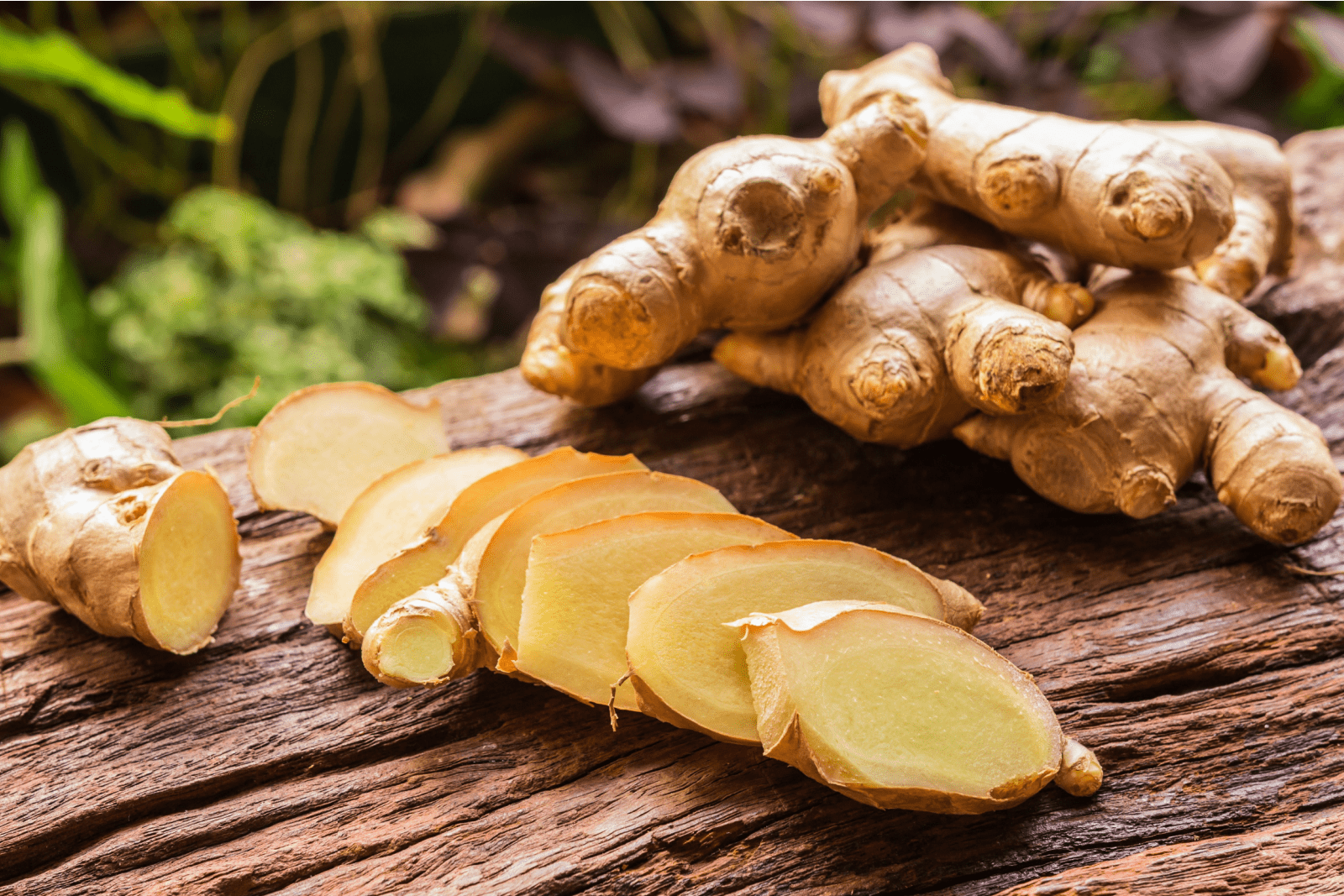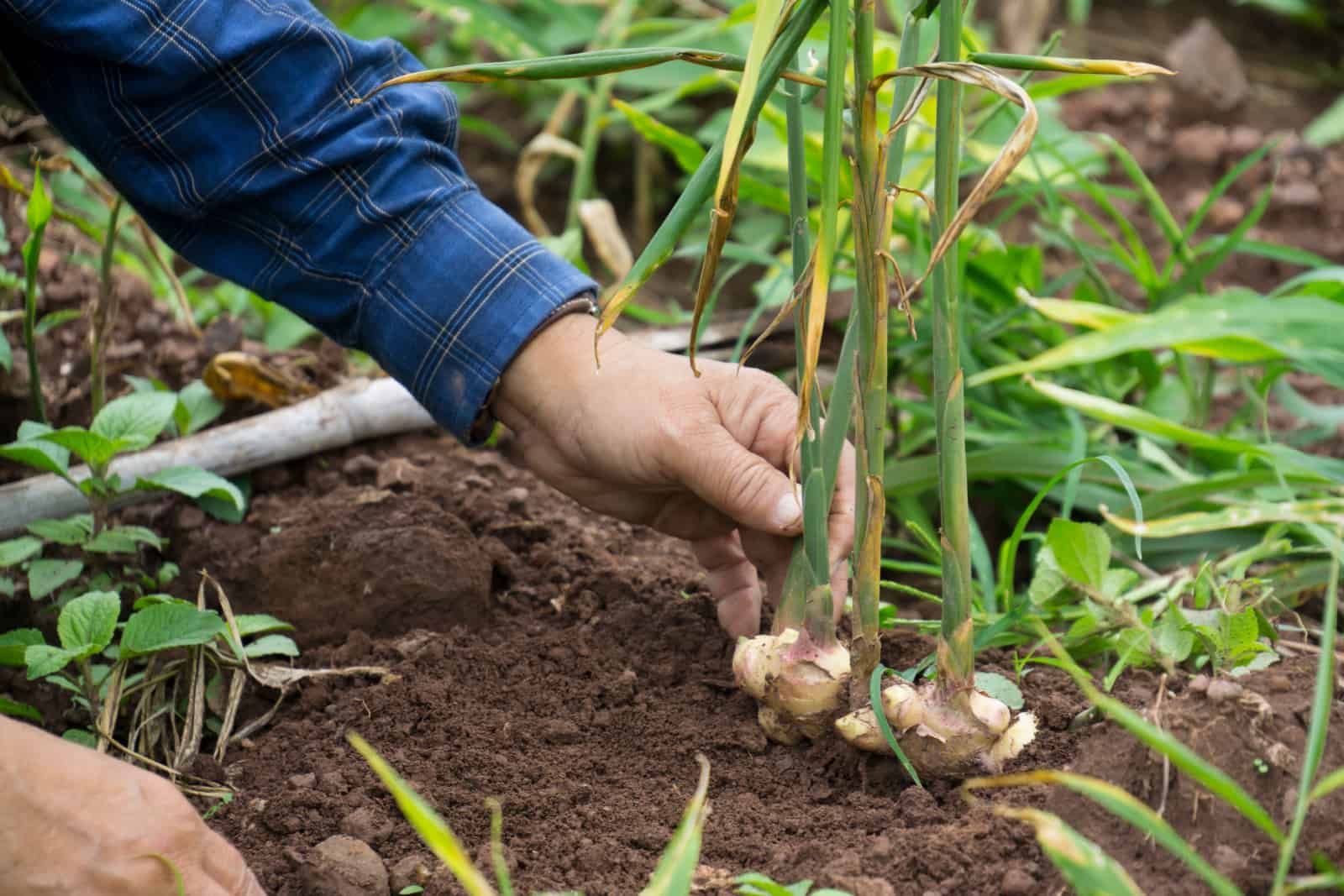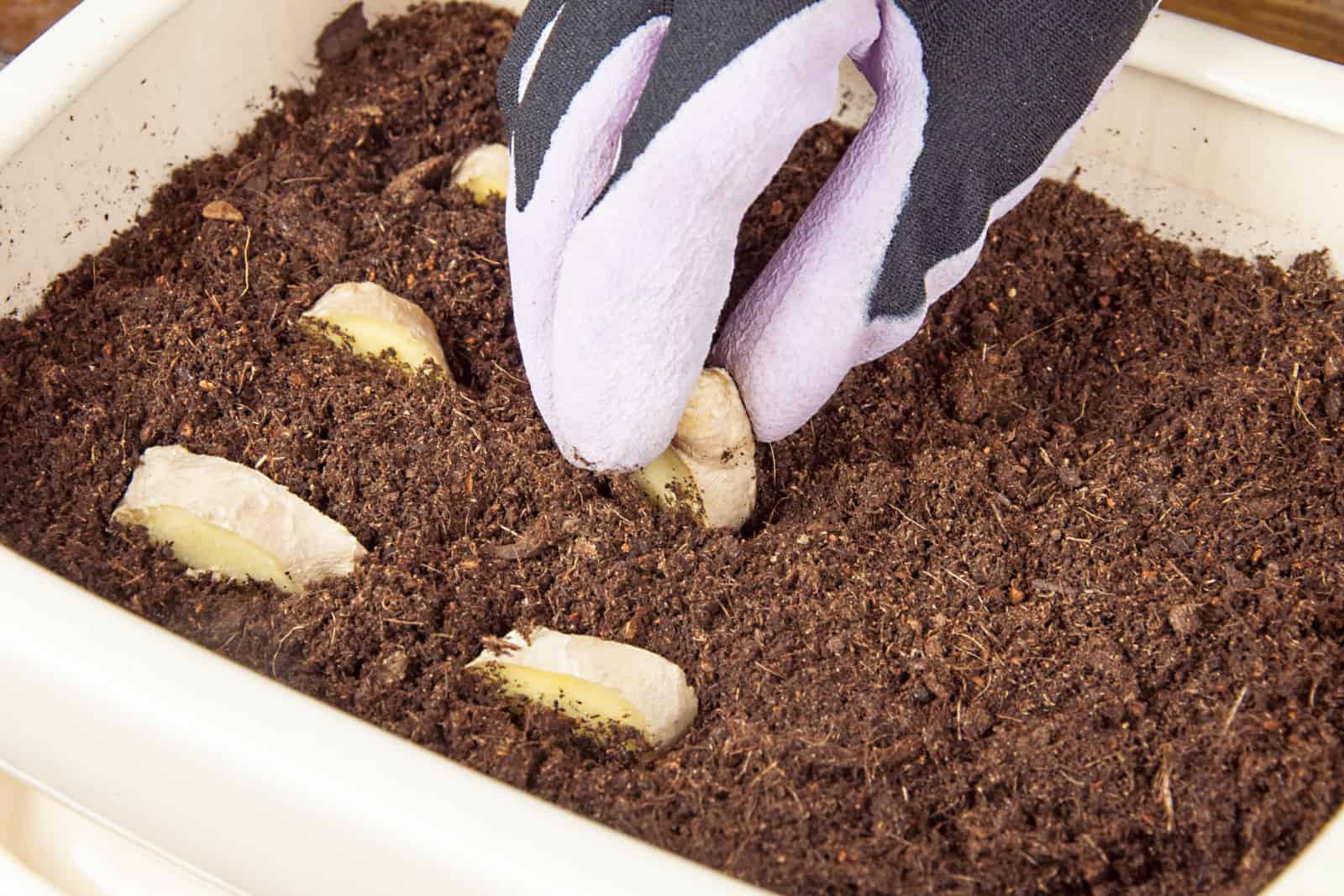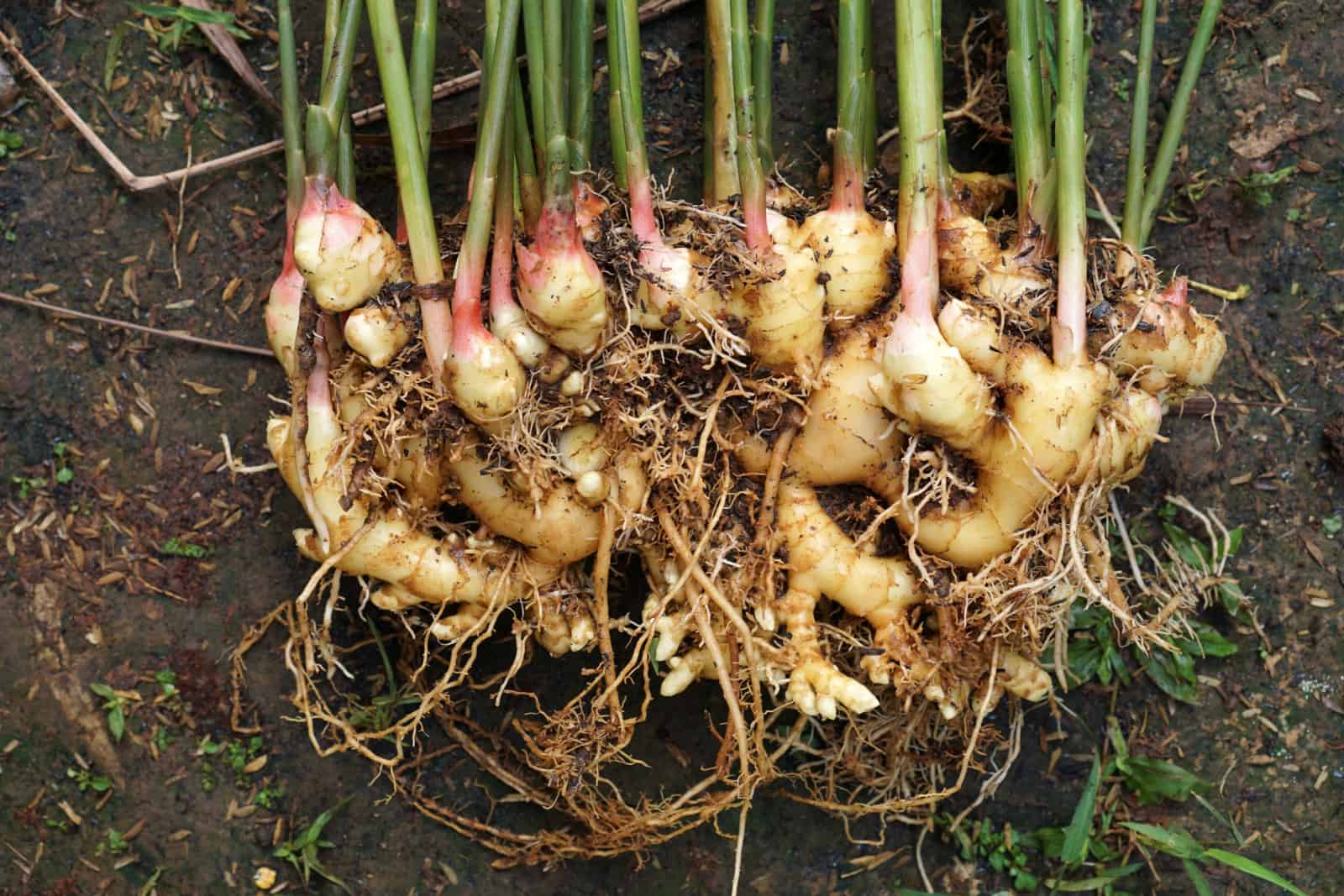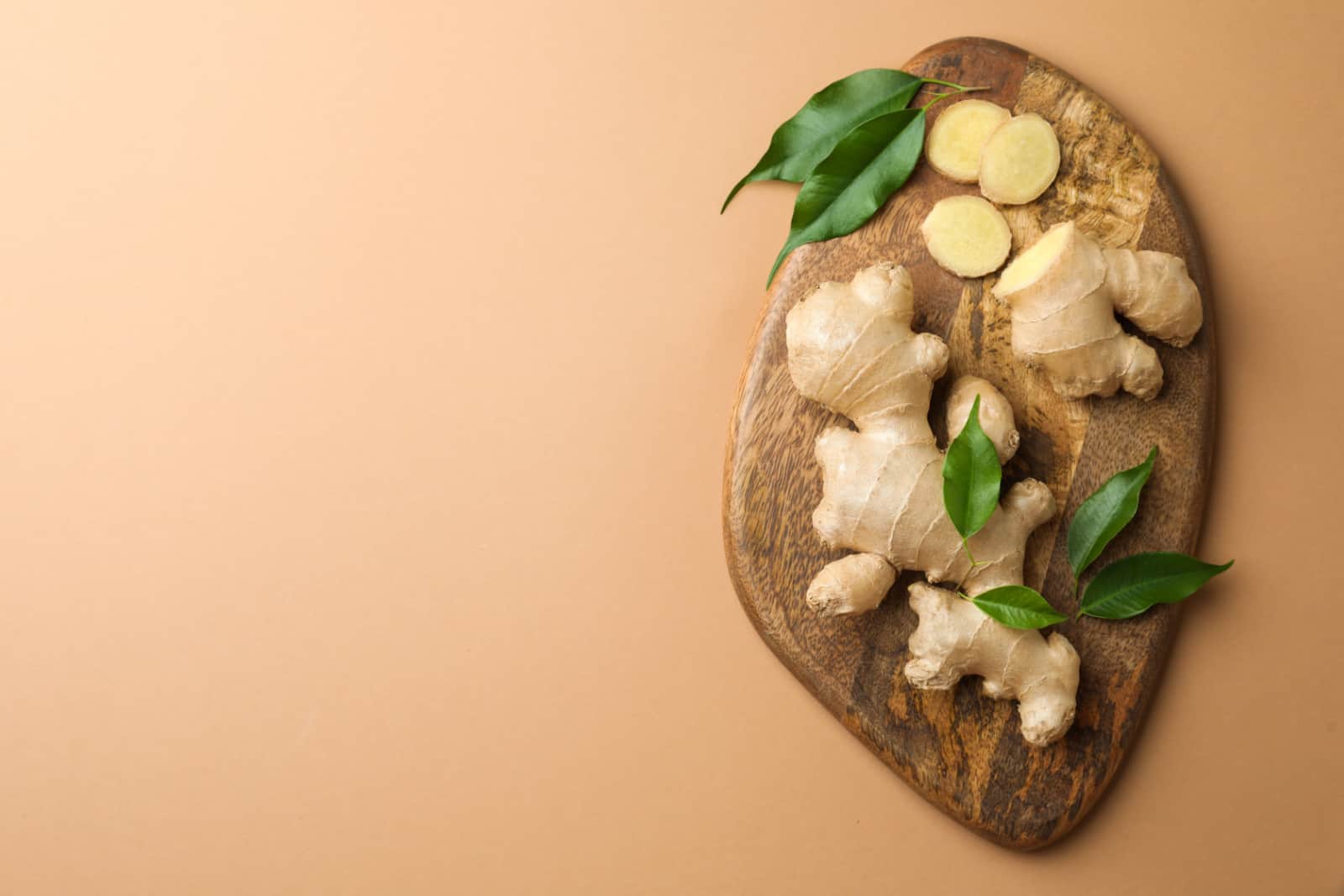If you are looking for a way to boost your health and add some zest to your meals, all you have to do is get yourself some ginger. Ginger is a famous plant that has been used for centuries for medicinal and culinary purposes.
Not only can ginger help lower blood sugar levels, improve brain function, and prevent heart disease, but it can also help with weight loss and soothe common cold symptoms. And the best part is that you can easily grow this superfood in your own backyard or even in your kitchen!
Luckily, growing ginger on your own has never been easier. With just a little bit of care and attention, you can have a constant supply of fresh ginger to use in your favorite dishes.
Keep reading to find out more about growing ginger!
What Is Ginger
Ginger, otherwise known as Zingiber officinale, is a herbaceous perennial plant that is grown for its famous ginger roots or rhizomes. The rhizome is actually an underground part of the stem, which usually grows about 5 inches long.
The plant produces long, narrow leaves and thin pseudostems. Pale yellow flowers can also be spotted during the blooming season.
This zesty plant originates from Southern Asia, though it’s now available worldwide. It belongs to the Zingiberaceae family, along with galangal and turmeric. Interestingly, it is usually cultivated rather than found growing naturally in the wild.
Benefits Of Ginger
Ginger was used for medicinal purposes over 5000 years ago in India and China. Today, there are multiple scientific studies proving that ginger has numerous properties beneficial for our health.
First of all, it may significantly reduce blood sugar levels and prevent heart diseases. According to a study from 2015, 2 grams of ginger powder per day reduced fasting blood sugar by 12% [1].
It can also help with digestion, reduce nausea, treat the common cold, improve brain function, and prevent cancer; all thanks to gingerol, a substance found in ginger that gives it its distinct aroma and flavor. Research has shown that gingerol has potent anti-inflammatory and antioxidant properties.
Adding ginger to your diet can help with weight loss in a variety of ways, including its capacity to boost calorie burn or decrease inflammation [2].
Moreover, ginger is famous for its distinctive flavor and is commonly used for culinary purposes. You can make ginger juices and cakes, add them to meals, sauces, jams, etc.
How To Plant Ginger
Now it’s time for planting!
Let’s look at how to choose healthy rhizomes that will grow into robust ginger, and also where and how to plant your new ginger plant.
Choose Healthy Rhizomes
Before we dive into planting, let’s first discuss which rhizomes are best. You can either get them from a local nursery or online. It is important that the rhizomes have not been treated with growth retardant to prevent shoots from forming.
A rhizome with tiny nodules like the chits that grow on potatoes is what you should be looking for. Your ginger plant will grow from these tiny growth buds.
Find The Perfect Spot
Ginger thrives in hot and humid conditions. In cooler climates, the plant can grow well in full sun. However, it may need more partial shade if the temperatures are warmer.
It is best cultivated in temperatures between 65 to 85 degrees Fahrenheit, although it can tolerate temperatures as low as 55 degrees and as high as 95 degrees Fahrenheit. The best annual rainfall range for ginger plants is between 1,400 and 3,000 mm.
They also thrive in well-draining and nutrient-rich soil, so it might need regular fertilizer if it is not planted in fertile soil. Ideal soil pH levels range between 6 and 7.
Planting
The best time to plant ginger in moderate climates is around the end of winter. If you are growing the plant indoors, you can do this anytime.
I always cut my rhizomes into smaller pieces. When you do this, make sure that each piece contains at least 2 or 3 nodes and also let the piece dry out and heal.
Prepare the materials required, which are adequate soil (fertile and well-draining) and an appropriate pot (if you are growing it indoors). The best pots for these plants are tall and narrow because they allow for roots to grow deeper.
Plant the rhizomes with the nodules pointing up, at least 2 inches deep in the soil, and 6 inches apart from each other. You can place your container on a heat mat, though they will grow just fine on a sunny windowsill if the temperatures are warm.
How To Plant Ginger In Warm Climates
In subtropical and tropical regions, ginger can simply be planted in the ground. It can grow in partial shade under tall trees. The soil must be fertile if you want your ginger to grow and thrive.
Ginger is a great plant to include in a tree circle, forest garden design, or other tropical polyculture. It can grow around trees like nut trees or fruit trees. The best companion plants include galangal, turmeric, orchids, and hibiscus.
How To Grow Ginger
Taking care of ginger is relatively simple. It’s even easier to grow indoors because you can control the growing conditions.
These plants thrive in temperatures between 71 and 77 degrees Fahrenheit. They also thrive in high humidity. You can get a humidifier or simply keep it in a more humid environment. For instance, I keep mine in the kitchen since it’s more humid, but you can also keep it in the bathroom.
However, make sure that the plant receives some sun in the morning. Watering is required when the soil feels dry. It should usually be watered deeply once a week. Don’t overdo it because your ginger won’t enjoy soggy soil.
You can add some low-nitrogen fertilizer once a month during the growing season to boost its growth and development.
How To Grow Ginger In Warm Climates
If you live in a warm climate, growing ginger outdoors shouldn’t be difficult. Once the ginger has been planted in the right location, it will keep growing and developing on its own.
If there is no rain, you should water it deeply once a week. Add fertilizer if the soil is not already fertile.
Keep in mind that outdoor ginger grows best in a tree circle.
How To Harvest Ginger
Ginger requires 10 months to reach full maturity and about 4 months to reach partial maturity. If you can’t wait for 10 months, you can harvest it when it has partially matured.
Make sure to carefully remove bits and pieces while still allowing the remainder to continue growing. This partially matured ginger is green and won’t taste the same as mature ginger.
If you planted it around the end of winter, you should be able to harvest some roots around fall. You can also harvest ginger stems to make sweets. However, I would recommend you wait until foliage has started falling off to harvest the roots.
If you want to grow ginger again, save some pieces with nodes for the next season.
How To Use Ginger
There are plenty of ginger uses for culinary, medicinal, and cosmetic purposes. Fresh, dried, powdered, oil, juice, and other forms of ginger can all be used.
You can make delicious gingerbread cake, cookies, soups, smoothies, teas, and much more! My personal favorite are “ginger shots” because they’re filled with minerals and vitamins crucial for our health.
If you don’t want to use ginger right away, you can always dry it and use it later. Simply leave it on a sunny windowsill for a few days. You can also use a dehydrator or dry your ginger in the oven. Store the dry ginger slices or grind them into a powder.
I hope you enjoyed this article.
Until next time!
You can also check out: How To Make Ginger Infused Skin Nourishment Pack
References
1. Khandouzi et al., (2015). The Effects of Ginger on Fasting Blood Sugar, Hemoglobin A1c, Apolipoprotein B, Apolipoprotein A-I and Malondialdehyde in Type 2 Diabetic Patients. National Center For Biotechnology Information. 2. Venkatakrishnan et al., (2019). Extensive review of popular functional foods and nutraceuticals against obesity and its related complications with a special focus on randomized clinical trials. Royal Society Of Chemistry.

